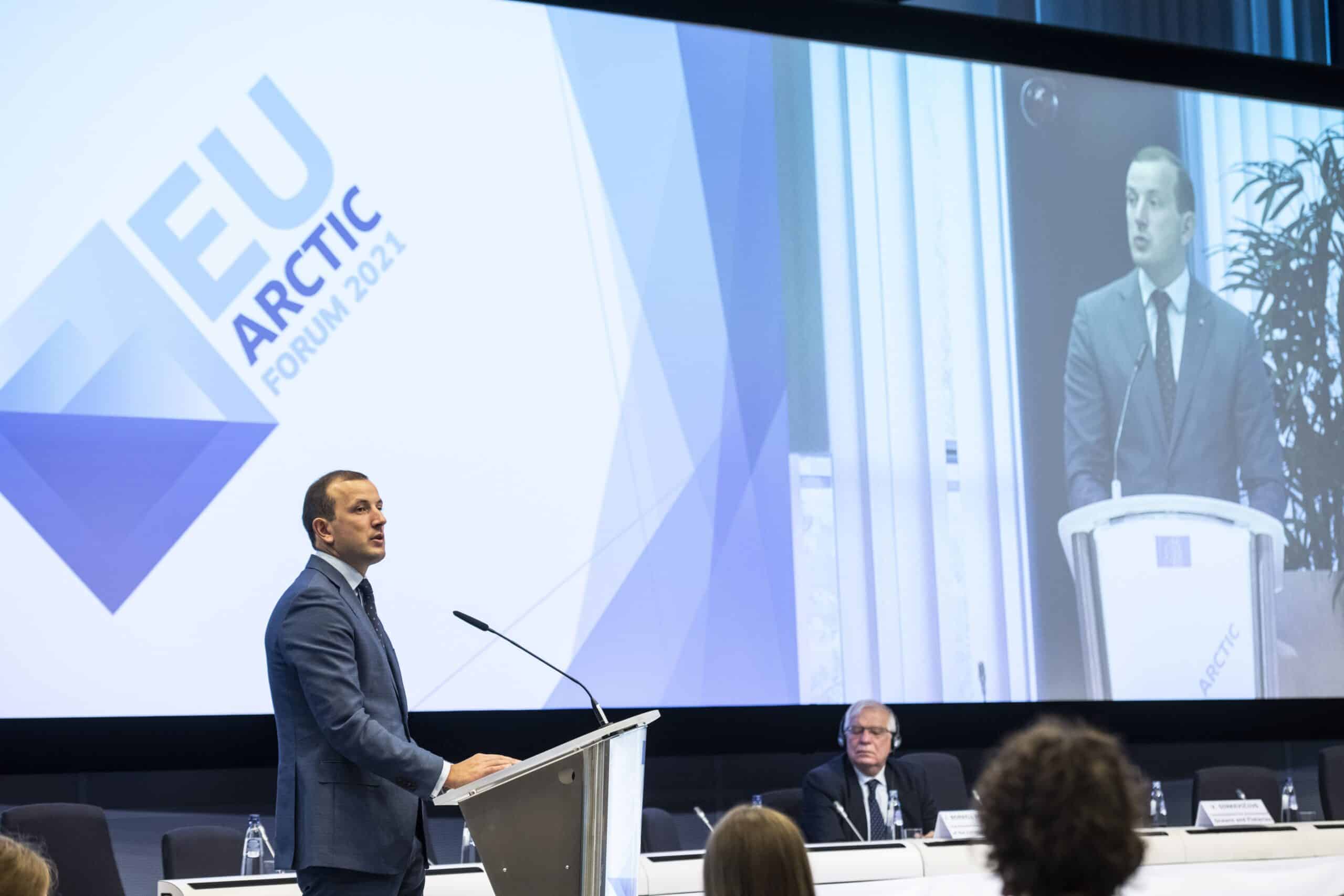The Arctic Institute’s 2023 Series on the European Union's Arctic Policy - From a Stakeholder Perspective

European Commissioner for Environment, Oceans and Fisheries, Virginijus Sinkevičius participated at the EU Arctic Forum in November 2021. Photo: European Commission – Audiovisual Service
The European Union is in the Arctic. As a geopolitical power, the EU has strategic and day-to-day interests, both in the European Arctic and the broader Arctic region.
The Arctic of the 21st century is neither uncharted territory nor waters for the European Union. Undoubtedly, and as prominently introduced in the latest – 2021 – update of its Arctic policy (from which the quote above is taken), the EU is an actor in the Arctic, and has multiple good reasons for being present in the region and pursuing its interests. Be it because of climate-induced changes within the Arctic and their repercussions on the European continent; because of the socio-economic challenges and opportunities emerging in and from the region; because the EU perceives itself a geopolitical power and the circumpolar North has always been a geopolitical region of alleged importance to the Union; because of the impact that the EU economy exerts on the Arctic via its demand for Arctic resources and pollution arriving there from Europe, or simply because Finland and Sweden are EU Member States with Arctic territories, and the Kingdom of Denmark… (okay, that particular matter is more complicated).
Since 2008, EU policymakers have not only come to understand Arctic complexities but have developed a comprehensive approach to the social, economic, political and environmental landscapes of the Arctic. For almost as long, we have both criticized and scrutinized the EU’s Arctic steps – from some early modest attempts in the Arctic Yearbook 2015 to more extensive analyses recently: one on the 2021 Joint Communication (note to everyone, including the European Commission’s Communication Desk, it is not a strategy) and some related thoughts after Russia’s invasion of Ukraine. Over all these years, we have learnt to understand that the EU is a complex entity – a true organization sui generis – whose Arctic policy is a noisy confusion articulated by many different institutional actors with different agendas and different mindsets, all arguing what the Arctic for the EU and what the EU’s role in the region should be.
However, while the EU is indeed in the Arctic, the Arctic has not yet fully reached the EU – mainly because the EU’s strategic and day-to-day interests are to be found somewhere else. With The Arctic Institute’s 2023 Series on The European Union’s Arctic Policy – From a Stakeholder Perspective, we want to contribute to a better understanding of the EU’s Arcticness by exploring the interlinkages between the EU’s Arctic policy and actions and the views, ideas and approaches of EU Member States and other stake- and rights-holders.
The European Union’s Arctic Policy – From a Stakeholder Perspective: An Outline
Emile Canova kicks off the series with her comparative analysis on the various Arctic policy documents issued by the EU and its Member States over the past 15 years. This is followed by three reflections on individual Member States and their interaction with the European Union’s Arctic ideas. While Mario Giagnorio discusses the crossroads of science diplomacy and Italy’s challenges of the EU’s greener engagement in the Arctic, Alexandra Middleton questions Finland’s Arctic policy, asking if the country properly addresses the future challenges and opportunities of the Arctic region. Erika Varik continues by elaborating on Estonia’s vision for a more influential EU in the Arctic, which reasonably also includes a Russian component. While the EU’s Arctic policy cannot be divorced from its complex relationship with Russia – particularly not since the Russian invasion of Ukraine in 2022 and all its Arctic repercussions – the Arctic may offer a site of future cooperation between the EU and the Russian Federation; a topic revisited by TAI’s Gabriella Gricius and Iren Marinova.
We continue our series with three comprehensive discussions on the EU’s relationship with Arctic Indigenous Peoples. We begin with Luke Laframboise and his reflections on almost thirty years of EU-Sámi relations and the apparent gap between external Indigenous rights and EU-internal realities. This is followed by an article by Anja Márjá Nystø Keskitalo and Jacqueline Götze, and their examination why both the EU Arctic policy and the European Green Deal need to resonate with a clearly defined EU internal policy on Indigenous Peoples. Eventually, Aleksis Oreschnikoff asks why the EU should focus on co-producing knowledge for its Arctic policy and how related cooperation with the Sámi could improve the EU’s geopolitical resilience in achieving an equitable green transition.
Finally, we return to the topic of the EU’s Arctic policy as such, which is an umbrella policy composed of internal, external and foreign policy elements. The notion of ‘policy coherence’ – discussed e.g. by Adam already in 2015 (internal, institutional, vertical and external coherence) – is the starting point of Dimitris Symeonidis’ article on the need of applied systems thinking in the complex interconnected and multidimensional landscape of the EU’s Arctic policy. We end The Arctic Institute’s 2023 Series on The European Union’s Arctic Policy – From a Stakeholder Perspective with our very own reflections on the subject matter in a TAI Bookshelf Podcast.